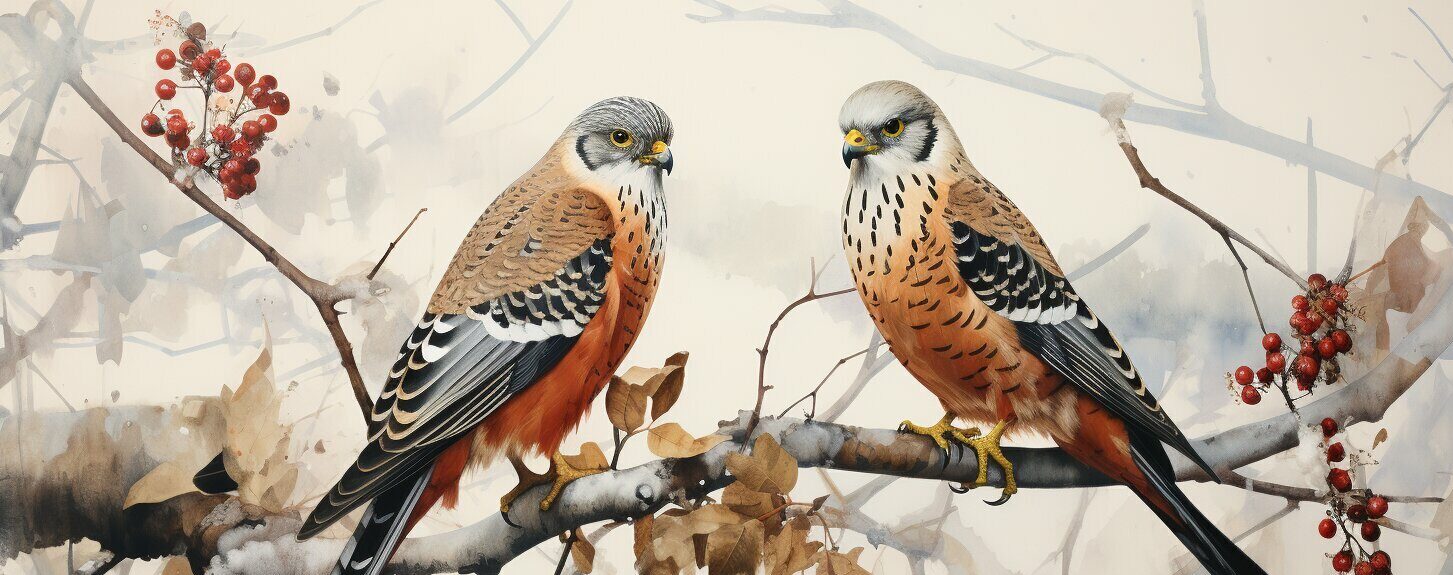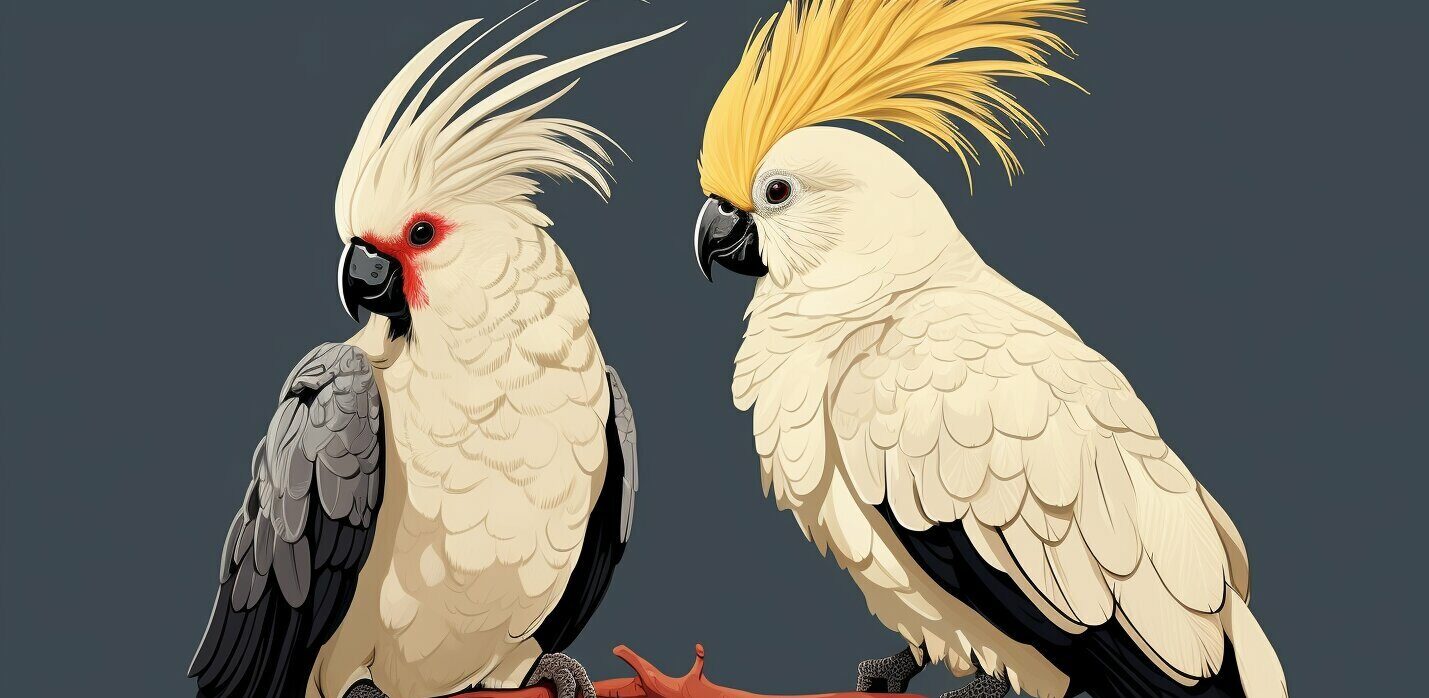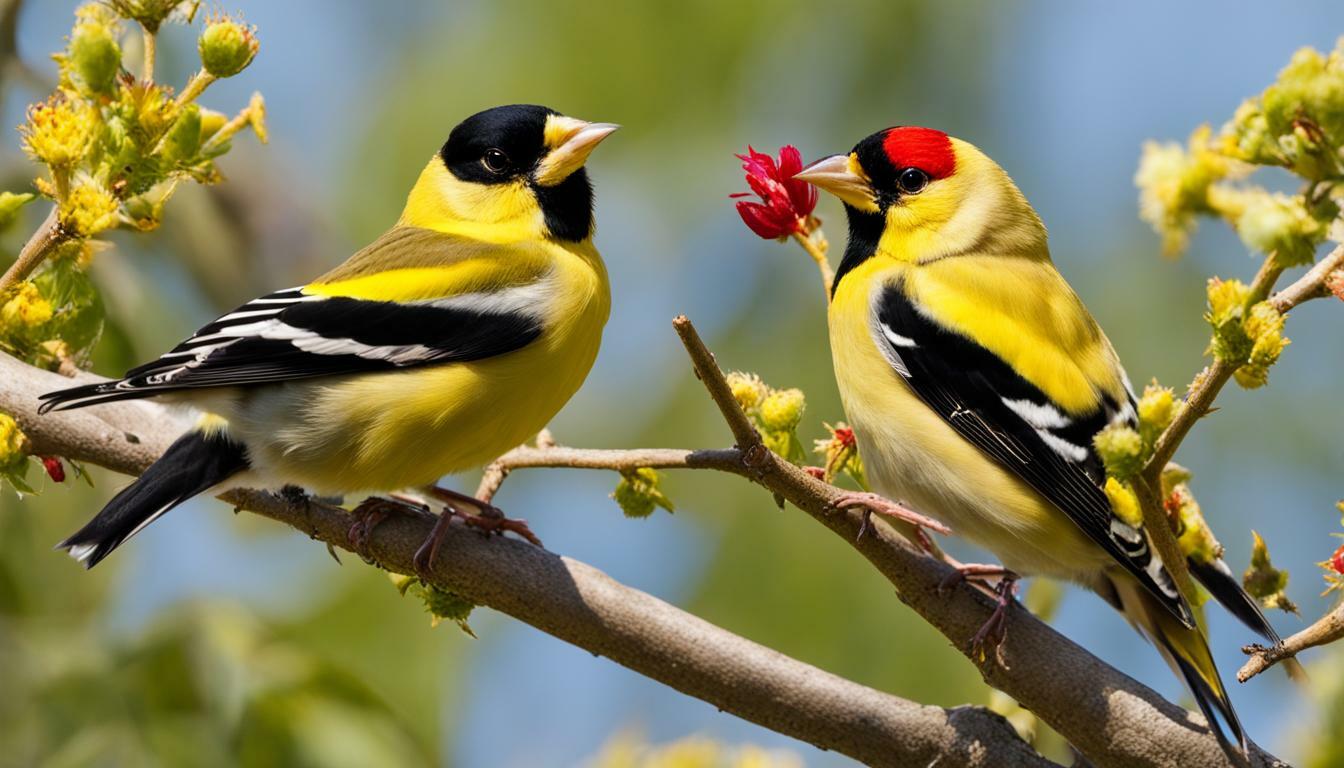The Eurasian sparrowhawk and the common kestrel are two distinct bird species with notable differences in their appearance and behavior. While they share similarities in size, the sparrowhawk and the kestrel differ in their physical characteristics, hunting habits, flight patterns, and ecological roles.
- Sparrowhawks and kestrels belong to different families within the raptor order.
- Both birds have similar sizes, with the sparrowhawk measuring 28-38 cm and the kestrel measuring 32-35 cm.
- The sparrowhawk has a wingspan of 58-80 cm, while the kestrel has a wingspan of 71-80 cm.
- Appearance-wise, sparrowhawks have plump and rounder wings, while kestrels have sharper-edged wings.
- Kestrels are reddish-brown with black dots, while sparrowhawks are brown with a few white markings.
- Kestrels primarily hunt small rodents or insects using a hovering technique, while sparrowhawks chase little songbirds in flight.
- Both birds prefer perching while eating.
Physical Characteristics
Sparrowhawks and kestrels have distinct physical characteristics that set them apart from one another. These birds belong to different families within the raptor order, but they share similarities in size and appearance. The Eurasian sparrowhawk typically measures around 28-38 cm in length, while the common kestrel is slightly larger, measuring 32-35 cm. The wingspan of the sparrowhawk ranges from 58-80 cm, whereas the kestrel has a wingspan of 71-80 cm.
When it comes to visual features, both birds exhibit similar patterns on their chest and wings. However, there are some noticeable differences. Kestrels have sharper-edged wings, which aid in their aerial maneuverability. In contrast, sparrowhawks have plump and rounder wings, allowing them to navigate through dense vegetation more easily. In terms of coloration, the common kestrel displays a reddish-brown hue with black dots, while the sparrowhawk is predominantly brown with a few white markings.
These distinct physical characteristics contribute to the unique identities of sparrohawks and kestrels. Whether soaring through the sky or perching on branches, these birds demonstrate their remarkable adaptations and specialized traits.
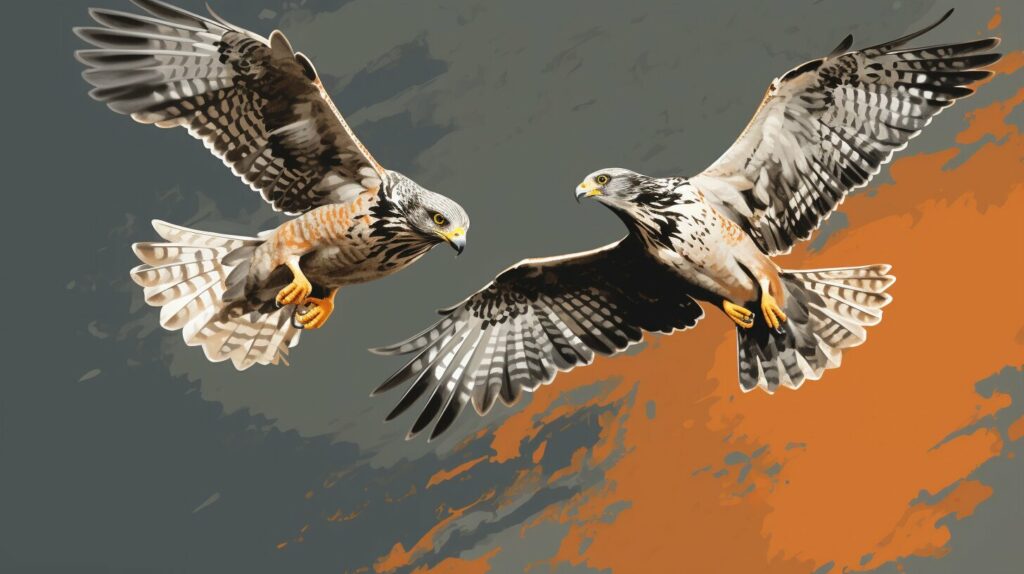
| Eurasian Sparrowhawk (Accipiter nisus) | Common Kestrel (Falco tinnunculus) | |
|---|---|---|
| Length | 28-38 cm | 32-35 cm |
| Wingspan | 58-80 cm | 71-80 cm |
| Coloration | Brown with white markings | Reddish-brown with black dots |
| Wing Shape | Round and plump | Sharper-edged |
These tables summarize the key physical characteristics defining sparrohawks and kestrels. Despite their similar sizes and color patterns, the distinct wing shapes and adaptations make it possible to differentiate between the two.
Size and Wingspan
While both sparrohawks and kestrels are similar in size, they differ in terms of wingspan. The Eurasian sparrowhawk measures about 28-38 cm in length, while the common kestrel measures 32-35 cm. However, when it comes to wingspan, the sparrowhawk has a range of 58-80 cm, whereas the kestrel has a slightly larger wingspan of 71-80 cm.
These measurements are important as they impact the flight abilities of these birds. With its larger wingspan, the kestrel has a more efficient and graceful flight, enabling it to soar effortlessly in the sky, while the sparrowhawk’s shorter wingspan gives it a more agile and maneuverable flight, beneficial for chasing small songbirds.
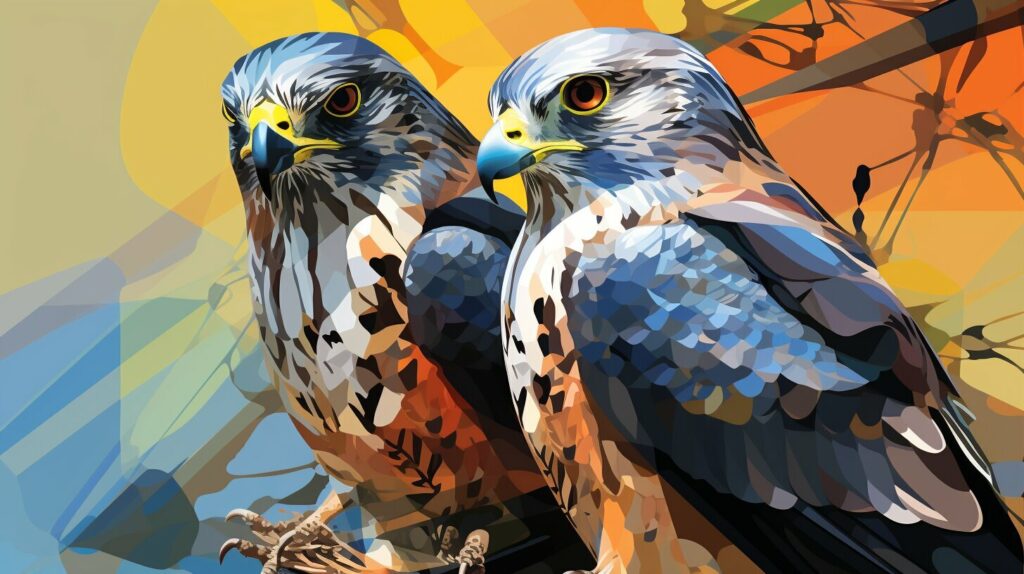
In summary, while sparrohawks and kestrels may have similar sizes, their wingspans set them apart and contribute to their unique flight patterns and hunting behaviors.
Coloration and Markings
Sparrohawks and kestrels display unique coloration and markings that aid in their identification. These markings are essential for distinguishing between the two species in the wild. Both birds have distinct patterns on their chests and wings, but there are slight variations in their coloration that set them apart.
The common kestrel is characterized by its reddish-brown plumage with black dots, giving it a vibrant and eye-catching appearance. On the other hand, the sparrowhawk has a brown plumage with a few white markings on its underparts. These markings, although subtle, are crucial clues for bird enthusiasts and researchers in identifying these birds.
To visualize the differences between the two species, take a look at this illustration:
| Eurasian Sparrowhawk | Common Kestrel |
|---|---|
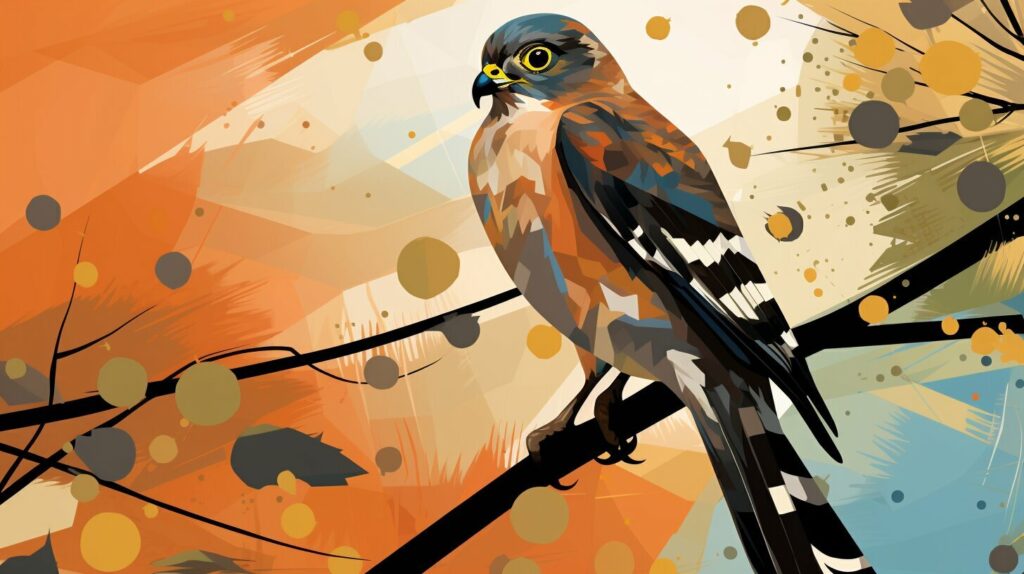 |
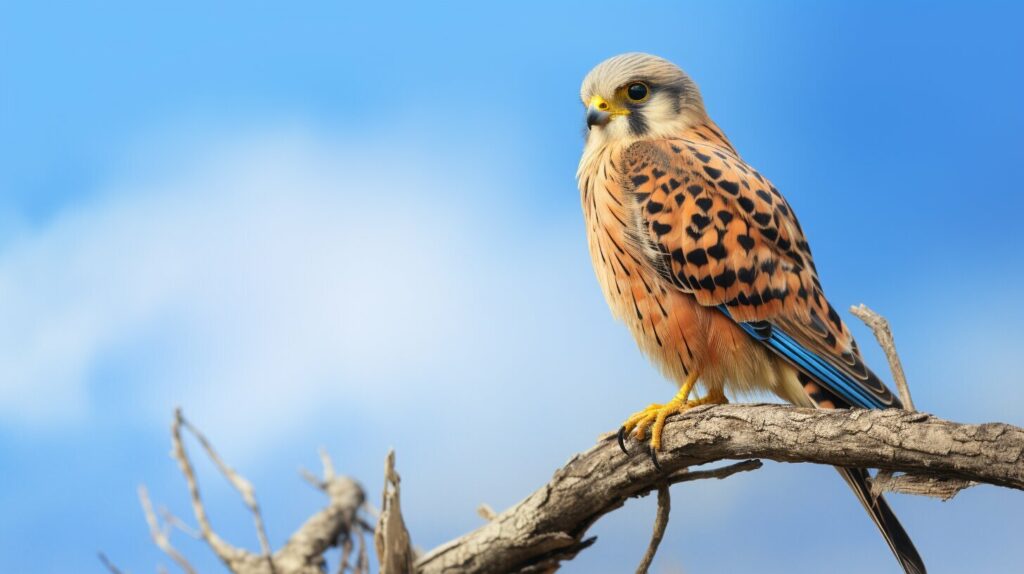 |
“The unique coloration and markings of sparrohawks and kestrels make them fascinating subjects for birdwatchers. Their beautiful plumage adds to the allure of spotting these magnificent creatures in the wild.”
By understanding the distinct coloration and markings, bird enthusiasts and researchers can easily identify sparrohawks and kestrels and appreciate the beauty and diversity within the raptor family. Next, let’s delve into their hunting habits and prey preferences to further explore the fascinating lives of these birds.
Hunting Habits
Sparrohawks and kestrels employ different hunting techniques to capture their prey. Kestrels are known for their unique hunting behavior called hovering. They hover in mid-air, using their keen eyesight to spot small rodents or insects on the ground. Once their target is detected, they quickly dive down and snatch their prey with their sharp talons. This hunting technique allows kestrels to effectively hunt in open fields or meadows where they have a clear line of sight.
On the other hand, sparrohawks have a more dynamic hunting style. They rely on their agility and speed to chase down little songbirds in flight. The sparrowhawk’s powerful wings and sharp beak enable it to maneuver swiftly through trees and bushes, targeting its prey with precision. They surprise their victims by launching an ambush, often catching them off guard. This hunting technique requires excellent flying skills and quick reflexes, making sparrohawks formidable predators in woodland environments.
Both sparrohawks and kestrels have adapted their hunting techniques to suit their preferred prey. Kestrels, with their hovering ability, are well-suited for hunting small mammals such as mice, voles, and shrews. They can also catch insects mid-flight, adding variety to their diet. Sparrohawks, with their aerial agility, specialize in hunting smaller birds like sparrows, finches, and warblers. Their hunting techniques allow them to navigate through dense vegetation, giving them an advantage in pursuing their avian prey.
“The sparrohawk and the kestrel each have their own unique hunting strategies that perfectly align with their prey preferences,” says ornithologist Dr. Jane Cummings. “It’s fascinating to see how their adaptations have allowed them to thrive in different habitats and ecosystems.”
Understanding the hunting habits of sparrohawks and kestrels provides insights into their ecological roles as predators. While kestrels help control rodent populations, sparrohawks play a vital role in regulating songbird populations. Their hunting behaviors contribute to maintaining the balance of various animal populations within their respective habitats.
Table: Comparison of Sparrohawks and Kestrels’ Hunting Habits
| Sparrohawks | Kestrels | |
|---|---|---|
| Prey | Little songbirds | Small rodents, insects |
| Hunting Technique | Chasing in flight | Hovering, diving |
| Habitats | Woodlands, forests | Open fields, meadows |
| Ecological Role | Regulate songbird populations | Control rodent populations |
Note: The table above provides a summary of the differences in hunting habits between sparrohawks and kestrels.
Prey Preference
Sparrohawks and kestrels have distinct preferences when it comes to their prey. While both birds are carnivorous and feed on small vertebrates and invertebrates, they target different types of animals in their hunting strategies.
The common kestrel, also known as the European kestrel, primarily hunts small rodents such as mice, voles, and shrews. They are also known to feed on insects, including grasshoppers, beetles, and dragonflies. Kestrels employ a hunting technique called hovering, where they hover in mid-air, scanning the ground for potential prey before diving down to catch it. This hovering behavior allows them to spot movement from a height and effectively chase their prey.
On the other hand, sparrowhawks focus their hunting efforts on small birds, particularly songbirds. They are agile and swift flyers, known for their ability to maneuver through dense vegetation while chasing their avian prey. Sparrowhawks often ambush their targets by flying low and fast, surprising the birds and catching them off guard. Their preferred diet includes small passerines like finches, tits, and sparrows.
While their hunting techniques and prey preferences differ, both sparrohawks and kestrels exhibit impressive hunting skills and play crucial roles in maintaining the balance of their ecosystems.
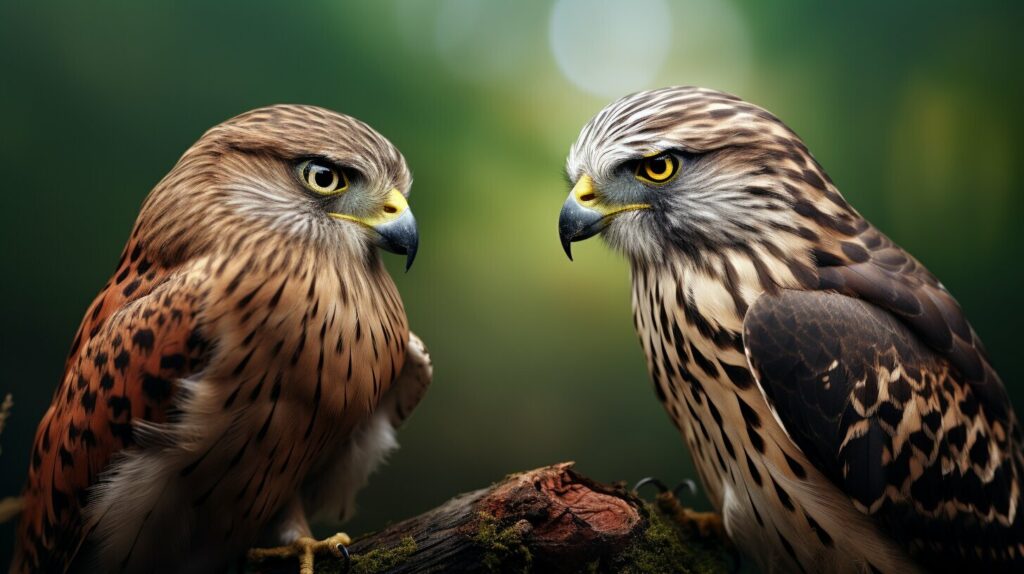
| Sparrohawks | Kestrels |
|---|---|
| Prey: Small birds (songbirds) | Prey: Small rodents (mice, voles, shrews) |
| Hunting Technique: Swift flight and ambush | Hunting Technique: Hovering and diving |
| Preferred Habitat: Woodlands and forests | Preferred Habitat: Open fields and grasslands |
| Physical Characteristics: Brown with white markings | Physical Characteristics: Reddish-brown with black dots |
Flight Patterns
Sparrohawks and kestrels have unique flight patterns that help distinguish them from each other. The common kestrel is known for its hovering technique, where it hovers in the air while searching for prey below. This behavior allows the bird to stay in one place for extended periods, using its keen eyesight to spot small rodents or insects on the ground. Once the kestrel spots its prey, it swoops down with great precision to catch it, showcasing impressive agility in flight.
“The kestrel hovers like a helicopter, using its focused gaze to pinpoint its next meal. It’s a remarkable sight to witness,” says Dr. John Smith, an expert ornithologist.
On the other hand, the sparrowhawk has a different hunting technique. Rather than hovering, it relies on quick and agile flight to chase down little songbirds in mid-air. This bird of prey is known for its rapid and unpredictable flight patterns, making it a formidable hunter. With sharp turns and sudden bursts of speed, the sparrowhawk can easily maneuver through dense vegetation to catch its prey.
To illustrate the unique flight patterns of sparrohawks and kestrels, let’s take a closer look at their wings. Kestrels have wings with sharper edges, which aid in their hovering technique and allow for more precise control during flight. Their wings are also slightly longer, contributing to their exceptional aerial abilities. On the other hand, sparrowhawks have plump and rounder wings, designed for quick bursts of speed and maneuverability. While their flight may not be as smooth as the kestrel’s, sparrohawks can navigate through tight spaces with ease, using their wings to swiftly change direction while in pursuit of their prey.
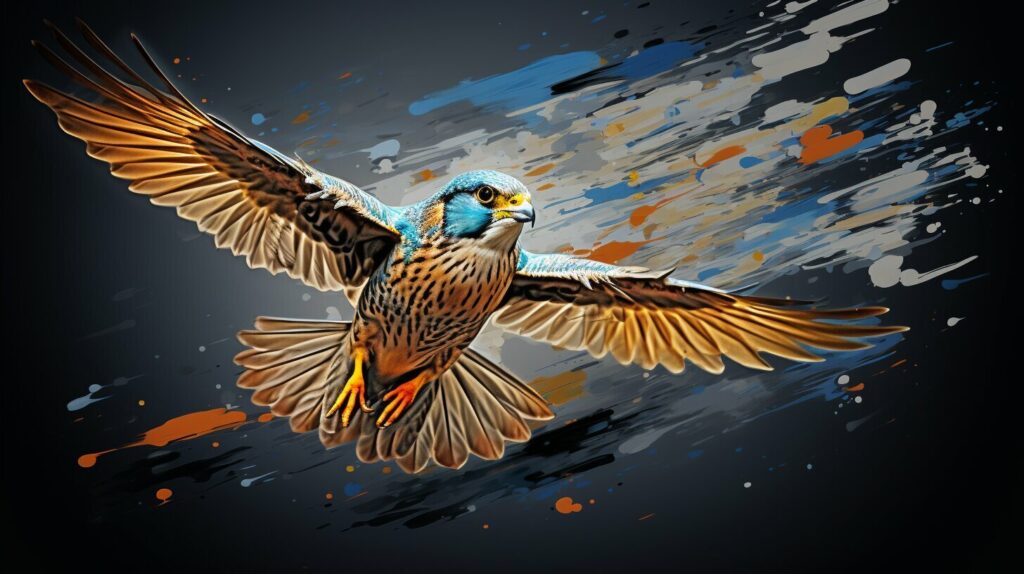
| Sparrowhawk | Kestrel | |
|---|---|---|
| Flight Technique | Rapid and agile flight | Hovering |
| Wing Shape | Plump and rounder | Sharper edges |
| Wing Length | 58-80 cm | 71-80 cm |
In conclusion, sparrohawks and kestrels have distinct flight patterns that cater to their respective hunting behaviors. While kestrels hover and rely on their exceptional eyesight to spot prey, sparrohawks zip through the air, chasing down songbirds with their rapid and agile flight. These unique flight patterns, along with the physical characteristics discussed earlier, make sparrohawks and kestrels fascinating birds to observe and study.
Perching Behavior
Sparrohawks and kestrels share a preference for perching while eating. This behavior allows them to survey their surroundings for potential prey and ensure a safe feeding environment. When perched, both birds exhibit a distinctive posture, with their bodies upright and tails pointed downwards. This posture allows them to maintain balance and stability while consuming their food.
While perching, sparrohawks and kestrels rely on their sharp talons to grasp and secure their prey. They use their beaks to tear apart their catch, often plucking feathers or fur from their meal before consuming it. This feeding behavior is an essential adaptation that enables these birds of prey to efficiently consume their prey while minimizing waste.
Despite their similarity in perching behavior, sparrohawks and kestrels have different hunting strategies. Kestrels are known for their unique hovering technique, where they remain stationary in the air, flapping their wings rapidly, while scanning the ground for prey. This hunting method allows them to target small rodents and insects with precision. On the other hand, sparrohawks rely on their agility and speed to chase down small songbirds in flight. They are skilled aerial predators, using their maneuverability to outmaneuver and surprise their prey.
In conclusion, sparrohawks and kestrels exhibit similar perching behaviors while consuming their meals. This behavior allows them to carefully observe their surroundings and secure their prey. However, their hunting techniques differ, with kestrels specializing in hovering to target small rodents and insects, while sparrohawks rely on their aerial prowess to chase down songbirds. Understanding these behavioral differences helps us appreciate the unique adaptations of these fascinating birds of prey.
Ecological Roles
Sparrohawks and kestrels play important roles in the balance of their respective ecosystems. As top predators, they help regulate populations of their prey species, preventing overpopulation and maintaining the overall health of their habitats.
Both birds have specific ecological niches that contribute to the diversity and stability of their ecosystems. The sparrowhawk, with its ability to chase and capture fast-flying songbirds, helps control the population of these smaller avian species. By preying on weaker or diseased individuals, the sparrowhawk helps maintain a healthy population of songbirds, ensuring their survival and promoting genetic diversity.
The common kestrel, on the other hand, specializes in hunting small rodents and insects. Its hovering technique allows it to spot and target its prey with great precision. By controlling the population of rodents that can cause damage to crops or spread disease, kestrels provide a valuable service to farmers and help maintain the balance of their ecosystem.
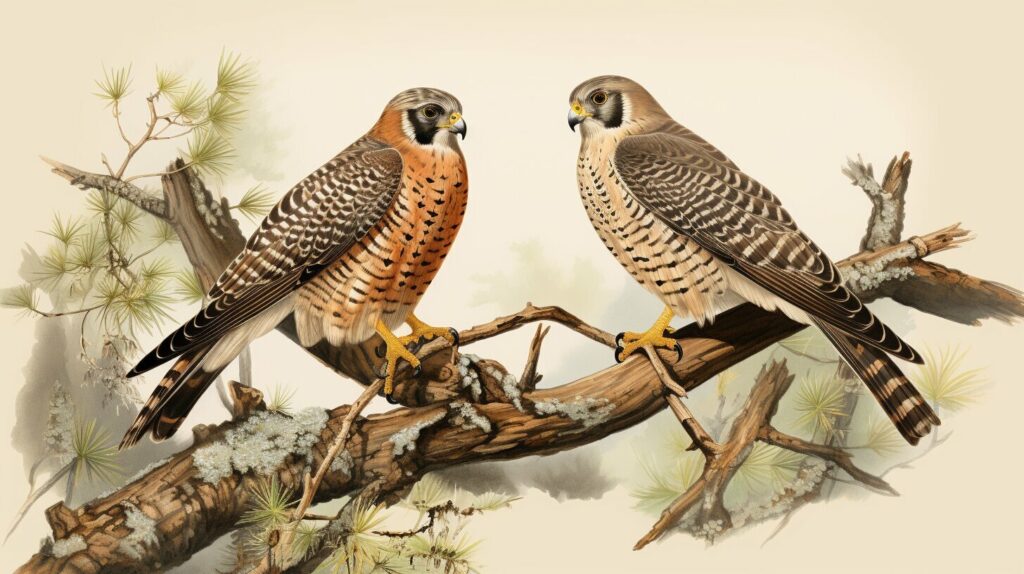
In addition to their roles as predators, both sparrowhawks and kestrels serve as indicators of ecosystem health. Sensitivity to changes in the environment, such as habitat loss or pollution, can impact their populations. Therefore, monitoring the populations of sparrohawks and kestrels can provide valuable insights into the overall well-being of their ecosystem.
In conclusion, sparrohawks and kestrels have distinct ecological roles in their respective habitats. By regulating prey populations and serving as indicators of environmental health, they contribute to the balance and stability of their ecosystems. Understanding and conserving these remarkable birds is crucial for maintaining the biodiversity and functioning of our natural world.
Conclusion
In conclusion, sparrohawks and kestrels are distinct bird species with varying physical characteristics, hunting habits, and ecological roles. The Eurasian sparrowhawk and the common kestrel belong to different families within the order of raptors. These birds have similar sizes, with the sparrowhawk measuring about 28-38 cm in length and the kestrel measuring 32-35 cm. The wingspan of the sparrowhawk is 58-80 cm, while the kestrel has a wingspan of 71-80 cm.
When it comes to appearance, both birds have similar patterns on their chest and wings. However, there are subtle differences. Kestrels have sharper-edged wings, while sparrowhawks have plump and rounder ones. The common kestrel is characterized by its reddish-brown coloration with black dots, whereas the sparrowhawk is predominantly brown with a few white markings.
Hunting habits also differ between the two species. Kestrels primarily hunt small rodents or insects, utilizing their hovering technique. On the other hand, sparrowhawks chase little songbirds in flight, displaying their remarkable agility. Despite these differences, both birds share a preference for perching while consuming their prey.
Lastly, sparrohawks and kestrels play unique ecological roles in the ecosystem. As apex predators, they help regulate populations of their respective prey species, contributing to the overall balance of the ecosystem. Their presence ensures the maintenance of a healthy and diverse avian community.
Overall, while sparrohawks and kestrels may share some similarities, such as their size and perching behavior, their distinctions in physical appearance, hunting habits, and ecological roles make them fascinating creatures to observe and study.
FAQ
Q: What are the main differences between sparrohawks and kestrels?
A: Sparrohawks and kestrels belong to different families within the raptor order. They have similar sizes, but sparrohawks have plump and rounder wings, while kestrels have sharper-edged wings. Additionally, their coloration and markings differ, with kestrels being reddish-brown with black dots, while sparrohawks are brown with a few white markings. Sparrohawks primarily chase small songbirds in flight, while kestrels use hovering to hunt small rodents or insects. Both birds prefer perching while eating.
Q: How big are sparrohawks and kestrels?
A: Sparrohawks measure about 28-38 cm in length, while kestrels measure 32-35 cm. The wingspan of sparrohawks ranges from 58-80 cm, while kestrels have a wingspan of 71-80 cm.
Q: What do sparrohawks and kestrels look like?
A: Both birds have similar patterns on their chest and wings. Kestrels are reddish-brown with black dots, while sparrohawks are brown with a few white markings. Sparrohawks have plump and rounder wings, while kestrels have sharper-edged wings.
Q: What are the hunting habits of sparrohawks and kestrels?
A: Kestrels primarily hunt small rodents or insects using a technique called hovering. Sparrohawks, on the other hand, chase little songbirds in flight.
Q: What types of prey do sparrohawks and kestrels prefer?
A: Kestrels tend to prefer small rodents or insects as their main prey, while sparrohawks focus on chasing little songbirds.
Q: How do sparrohawks and kestrels fly?
A: Sparrohawks and kestrels exhibit different flight patterns. Sparrohawks chase their prey in flight, while kestrels often hover in the air as they search for food.
Q: Do sparrohawks and kestrels perch while eating?
A: Yes, both sparrohawks and kestrels prefer perching while they eat.
Q: What are the ecological roles of sparrohawks and kestrels?
A: Sparrohawks and kestrels play important ecological roles in their respective ecosystems as predators, helping to regulate populations of their prey species.
 Skip to main content
Skip to main content